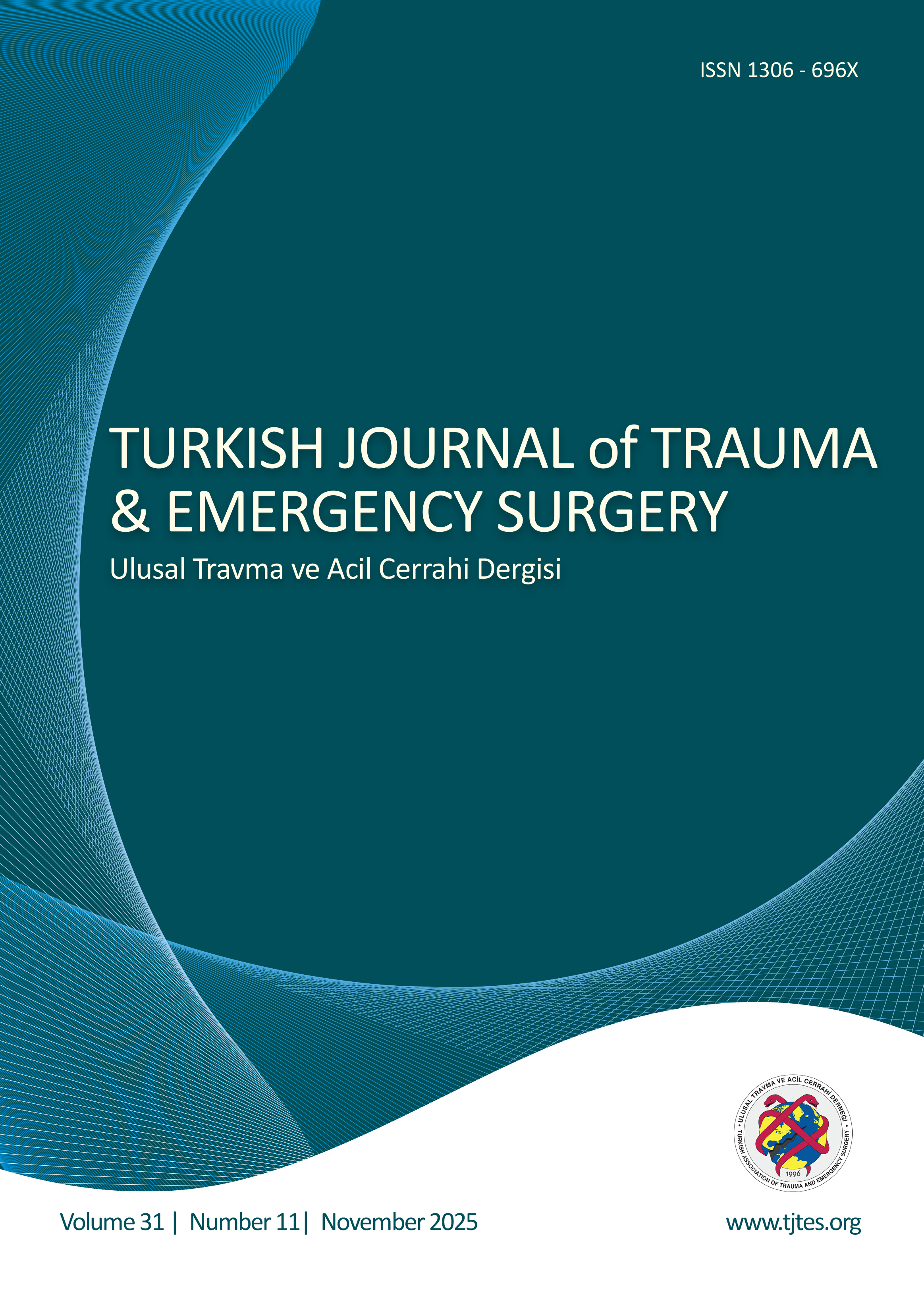Hızlı Arama
Komplike akut apandisiti öngörmede ameliyat öncesi rutin kan testlerinin etkinliği
Server Sezgin Uludağ, Ozan Akıncı, Nazim Güreş, Emre Tunç, Ergin Erginöz, Ahmet Necati Şanlı, Abdullah Kağan Zengin, Mehmet Faik Özçelikİstanbul Üniversitesi Cerrahpaşa - Cerrahpaşa Tıp Fakültesi, Genel Cerrahi Anabilim Dalı, İstanbulAMAÇ: Akut apandisitte perforasyonun erken tahmini ve teşhisi cerrahların en uygun tedaviyi seçmesine olanak tanır. Bu çalışmanın amacı, ameliyat öncesi rutin laboratuvar incelemelerinin komplike akut apandisiti öngörmede rolü olup olmadığını değerlendirmektir.
GEREÇ VE YÖNTEM: Çalışmada 20142019 yılları arasında akut apandisit tanısı ile ameliyat edilen 783 hasta geriye dönük olarak incelendi. Perfore olmayan ve perfore akut apandisiti olan hastalar arasında ameliyat öncesi laboratuvar testleri arasında lökosit (WBC), nötrofil, lenfosit, trombosit (PLT), ortalama trombosit hacmi (MPV), trombosit dağılım genişliği (PDW), C-reaktif protein bulunur. Çalışmada CRP ve nötrofil-lenfosit oranı (NLR) parametreleri karşılaştırılmıştır.
BULGULAR: Toplam 81 olguda histopatolojik olarak apandisit saptanmamıştır. Çalışmada 702 hastanın %89.9u (n=631) perfore bulunmamıştır, %10.1i (n=71) perfore akut apandisit tanısı almıştır. Yaşlı hastalarda perforasyon oranı daha yüksek bulunmuştur (p<0.01). Lenfosit sayısının perfore grupta anlamlı olarak daha düşük olduğu, CRP ve NLRnin anlamlı olarak yüksek olduğu görüldü (sırasıyla p=0.048, p=0.001, p=0028). Perfore akut apandisit tanısında eşik değerleri CRP için 44.0 mg/dL, NLR için 7.65 ve lenfositler için 1.7/mm3 idi. Gruplar arasında WBC, nötrofil, PLT, MPV ve PDW değerleri açısından istatistiksel olarak fark yoktu.
TARTIŞMA: Düşük lenfosit sayısı, yüksek CRP ve yüksek NLR, komplike akut apandisit tanısında güvenilir ve güçlü prediktif parametreler olarak bulunmuştur.
Anahtar Kelimeler: CRP, komplike apandisit, lenfosit, NLR.
Effectiveness of pre-operative routine blood tests in predicting complicated acute appendicitis
Server Sezgin Uludağ, Ozan Akıncı, Nazim Güreş, Emre Tunç, Ergin Erginöz, Ahmet Necati Şanlı, Abdullah Kağan Zengin, Mehmet Faik ÖzçelikDepartment of General Surgery, İstanbul University Cerrahpaşa - Cerrahpaşa Faculty of Medicine, İstanbul-TürkiyeBACKGROUND: Early prediction and diagnosis of perforation in acute appendicitis allow surgeons to choose the most appropriate treatment. The purpose of this study is to evaluate whether pre-operative routine laboratory examinations have a role in predicting complicated acute appendicitis.
METHODS: In the study, 783 patients operated with the diagnosis of acute appendicitis between the years 2014 and 2019 were analyzed retrospectively. Among the patients with non-perforated and perforated acute appendicitis, pre-operative laboratory tests include leukocyte (WBC), neutrophil, lymphocyte, platelet (PLT), mean platelet volume (MPV), platelet distribution width (PDW), C-reactive protein (CRP), and neutrophil-to-lymphocyte rate (NLR) parameters were compared.
RESULTS: Appendicitis was not detected histopathologically in 81 cases. In the study, 89.9% (n=631) of the 702 patients were non-perforated and 10.1% (n=71) were perforated acute appendicitis cases. Perforation rate was higher in elderly patients (p<0.01). It was seen that lymphocyte count was significantly lower in the perforated group, and CRP and NLR were significantly higher (p=0.048, p=0.001, p=0.028, respectively). In the diagnosis of perforated acute appendicitis, cutoff values were 44.0 mg/dL for CRP, 7.65 for NLR and 1.7/mm3 for lymphocytes. There was no statistical difference between the groups in terms of WBC, neutrophil, PLT, MPV, and PDW values.
CONCLUSION: Low lymphocyte count, high CRP, and high NLR were found to be reliable and strong predictive parameters in the diagnosis of complicated acute appendicitis.
Keywords: Complicated appendicitis, C-reactive protein, lymphocyte, neutrophil-to-lymphocyte rate.
Makale Dili: İngilizce





